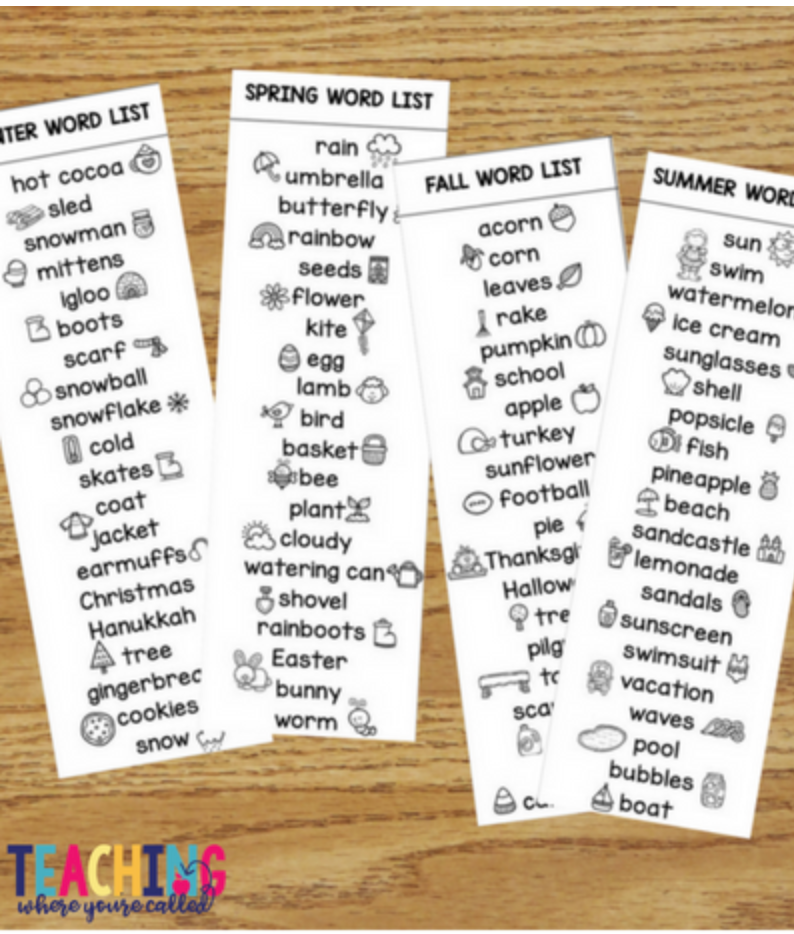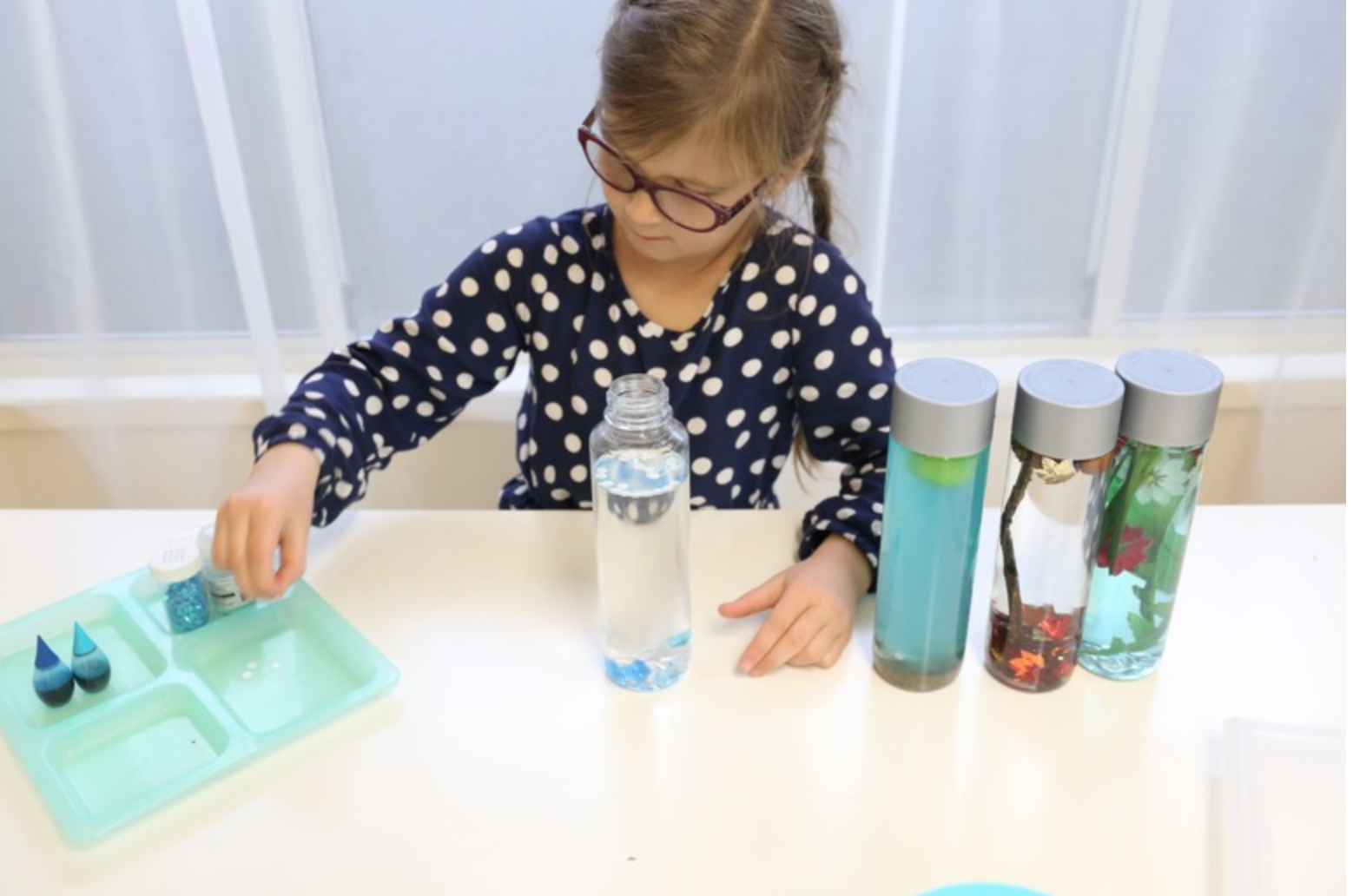At-Home STEM Activities: Celebrate the Seasons!
This Saturday—June 20, 2020—marks the official beginning of summer in the Northern Hemisphere, with the occurrence of the June solstice. In celebration, we’re focusing this week’s Distance Learning offerings on seasons. In yesterday’s blog post we learned what causes the Earth’s seasons and explored the reasons for equinoxes and solstices. Today we have compiled a list of online resources for teaching students about the seasons and have filled this blog post with a ton of fun ideas for how to teach the seasons hands-on!
Idea #1
This is one of my favorite activities that you can keep up all year long when you are done! Divide a paper plate into 4 sections and decorate each section to represent a season. Use any kinds of craft materials that you have lying around. Use a clothespin or use a fastener and attach an arrow in the center of the plate and have it point to the correct season.
Idea #2
Education.com gives 10 ways to teach your child about the seasons. All of these activities can be done while social distancing are great to do in the coming good weather!
Keep a Science Journal. Once a week or once a month, go outside with your child and draw what you see. Focus on things that are tangible: the leaves on the trees, people’s clothing, jobs that people are doing (raking leaves, shoveling snow), animals and plants. The process of recording will strengthen his observation skills. Another journal option: focus on recording what happens to one deciduous tree in your backyard or on your street.
Take a Sensory Walk. Walk around your neighborhood, or travel to a nearby park or forest preserve. As you walk, stop and watch, listen, smell, touch, and even taste. As you explore, expand your child’s vocabulary by asking questions. Is the temperature cold or freezing? Hot or boiling? Does the air taste fresh or damp? Do you feel rain, hail, or mist?
Taste the Seasons. Once each season, go to a local farmer’s market and choose only fruits and vegetables that are in season. What kind of foods can you eat in each season? Which season is the most delicious? Make a recipe book, complete with photos of the food you made, to document your tasty year.
Celebrate Firsts. On your family calendar, mark the day when your child has to wear a sweater because it’s getting colder, or the first day of summer when she can wear her bathing suit. Mark the first day it's hot enough to eat ice cream outside, and the first day she really enjoys hot cocoa. By the end of the year, your child will have calendar full of firsts!
Seasonable Fashion. Introduce the idea of temperature by recording what your child wears alongside the temperature. Once a week during a changing season, such as from winter to spring, record the temperature and what he’s wearing. Then talk about the trend you see. As the temperature got higher, how did his clothing change? As the season changes from summer to fall, you can repeat the activity and talk about what happens to our clothing as the temperature drops.
Study Sunlight. As days get longer, says Brenneman, kids should discuss why we protect ourselves from the sun. On a sunny afternoon, put a piece of colored paper in direct sunlight, and another piece under a cover. After a few hours, look at both pieces and discuss what happened.
Create a Weather Tracker. Buy a calendar that you can dedicate to tracking weather. Each day, draw the weather on the calendar. Let your child come up with symbols for sunny, rainy, cloudy, snowy, and other types of weather (misty, foggy). At the end of each month, count the number of sunny, rainy, or cloudy days. Talk about what kind of weather you see during each season.
Bulb Study. In October or early November, choose a flower, like tulips, that will bloom in early spring. Take one bulb apart so your child can observe the little roots and the beginning of a flower’s stem. Plant the rest in your backyard. Record what happens through winter and into spring.
Animal Spotting. Use binoculars to watch animals as the seasons change. Watch squirrels getting ready for winter by carrying acorns into trees. Observe birds migrating south. Or watch birds building nests in springtime. Books like Bear Snores On by Karma Wilson, Hibernation Station by Michelle Meadows, and Home for a Bunny by Margaret Wise Brown will help start a conversation about what animals do in different seasons.
Leaf Walk. During fall, collect different kinds of leaves and sort them by how they feel, or their color or shape. Austin recommends making a poster board with different shapes so kids can match leaves with ovals, circles, squares, and triangles.
Idea #3
Four Seasons sorting activities can be a fun way to get creative and teach students how to correctly identify the object with their season. Color and cut our your own matching game, or print out one from home.
Idea #4
Teachingwhereyourecalled.com has a great list of four seasons activities for pre-k and kindergarten. One of my favorites was a Four Seasons Themed Words List. The website gives you the options of purchasing templates, but you would also work with your kids to come up with lists of your own. Think of 10 or 20 words that fit best into each of the seasons. When you think of Fall, what do you think of? Apples, sweaters and Halloween!
Idea #5
A Little Pinch of Perfect provides free kids activities, crafts and free printable online. I found their Four Seasons Nature Tree project to be the perfect blend of nature and craft for a seasons activity!
The website suggests using natural items found around your home or on a nature walk. Dried split peas, leaves, grass, corn, flowers, seeds, leaves and white sand was a few options.
Idea #6
Mama Papa Bubba is a great family run site that has a bunch of fun activities for kids, including this Season Sensory Bottle idea. This activity uses old water bottles, or you could even use mason jars as the bottle. Blue food coloring gives the bottle a nice blue color and each bottle is filled with different objects to represent the seasons. Research the different seasons and brainstorm ideas for fillers before beginning your activity to help your student better understand the seasons and the difference between them.









